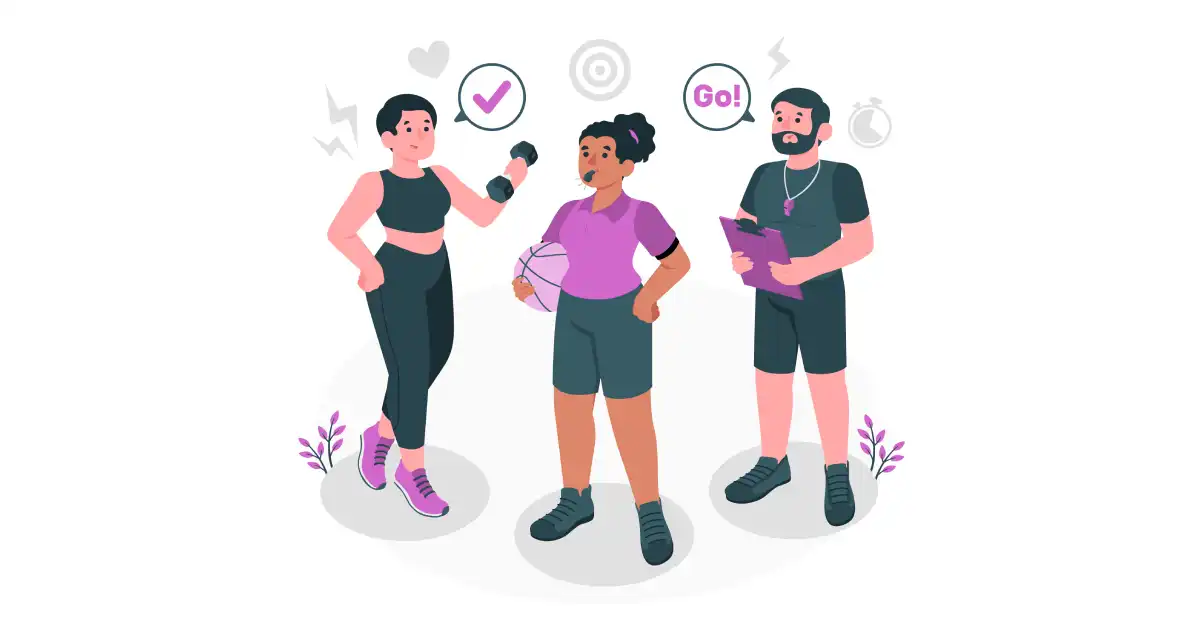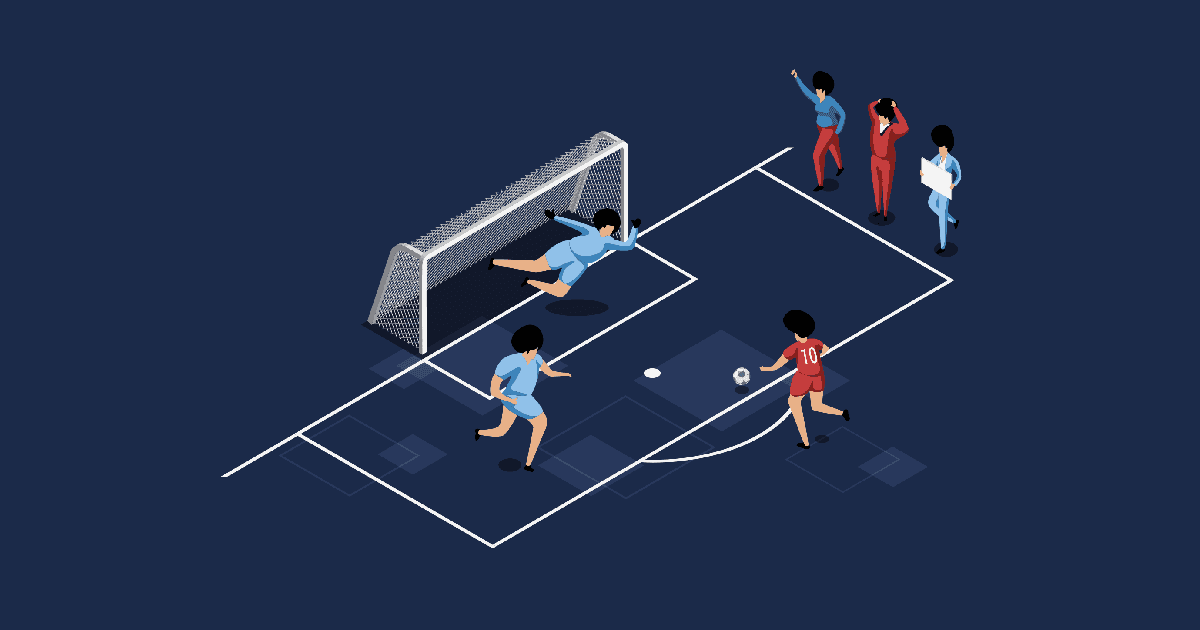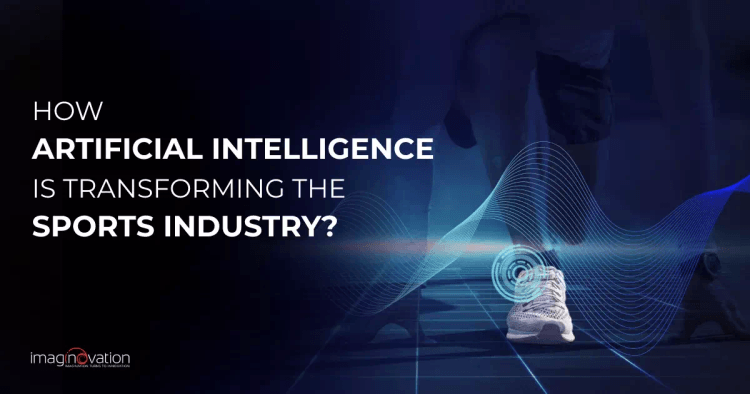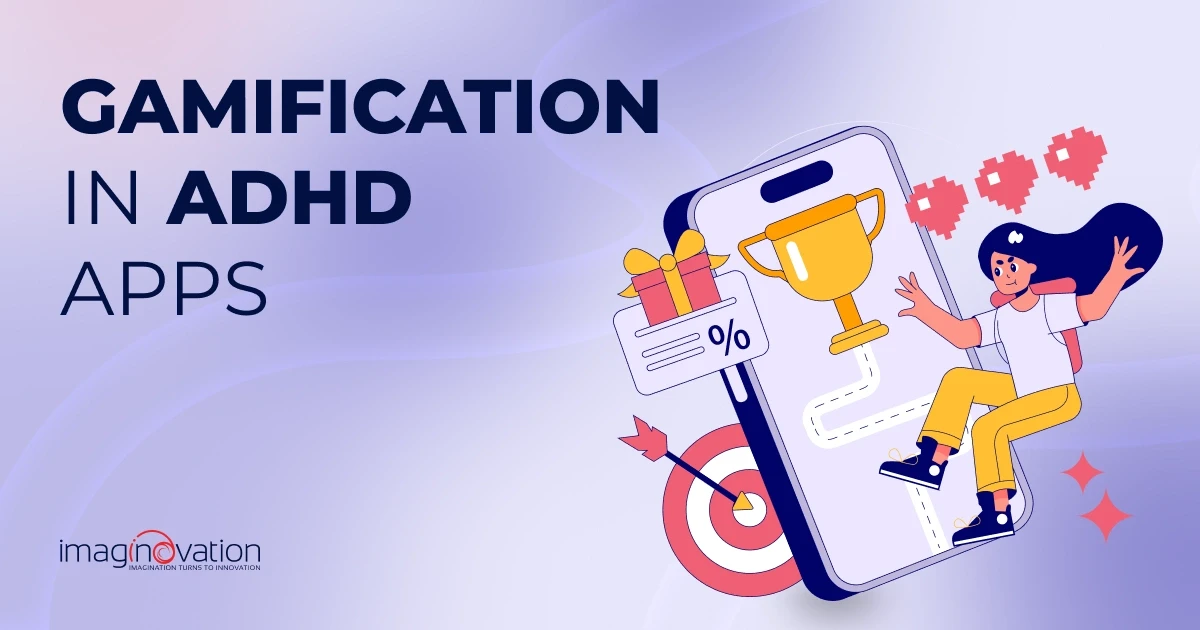In recent years, artificial intelligence has made significant advances and is now being used in various industries, including sports.
AI is transforming the sports industry in many ways. It is making the training process competitive and more efficient. It is also helping to analyze and predict athletes’ performance.
In this blog post, you can find an overview of the current state of AI in the sports industry, as well as seven practical, real-life applications.
AI in Sports Industry: An Overview
There are many potential applications of AI in the sports industry.
It is becoming so ubiquitous that statistics show the AI segment in the sports industry will reach a value of 19.2 billion dollars by 2030.
As far as practical applications are concerned, here is an example.
AI can be used to analyze large amounts of data to identify patterns and trends. This information can be used to improve player performance, make strategic decisions, and better understand the game.
AI can also be used to create virtual reality environments for training and player development. It is already being used by some of the biggest names in sports.
For example, the National Football League (NFL) has been using this technology to analyze game films and improve player performance.
Major League Baseball (MLB) is using AI to help teams make better decisions about player personnel. And the National Basketball Association (NBA) is using AI to improve its scouting process.
There are many potential benefits of using artificial intelligence in the sports industry. It can help teams save time and money while also improving performance.
For example, AI can be used to reduce the amount of film that needs to be reviewed by coaches. AI can also be used to create custom training programs for athletes based on their specific needs.
An unexpected benefit is that it also has the potential to help smaller teams compete against larger teams by providing them with access to the same data and tools that the more prominent teams have.
The use of AI in the sports industry is still in its early stages, but the potential applications are endless. As it continues to develop, the sports industry will continue to find new and innovative ways to use it.

AI Applications and Use Cases in Sports
We have spoken a bit about the industry itself and the usage of AIs in the industry in general. Now, let's dive into some applications and use cases of AI in the sports industry.
1. Harnessing AI for Advanced Player Performance Predictive Models
The potential of predictive modeling, a sophisticated form of AI, extends beyond traditional fields such as marketing or finance—it's transforming the way we approach sports analytics and player performance.
Through these AI-enabled models, teams can anticipate injuries or performance slumps, allowing coaches and managers to strategize player rotations and game plans proactively.
But the power of predictive modeling doesn't stop there. It can also spotlight players primed for breakout seasons, providing invaluable insights for trades and signings.
AI achieves these predictive models by leveraging machine learning algorithms to scrutinize historical data, player stats, injury history, and disciplinary records, among others.
The analysis of these data points empowers AI to devise models that forecast future player performance with remarkable precision.
Here's a glance at what these predictive models can determine:
- The probability of a player getting injured.
- The likelihood of a player underperforming.
- The potential of a player experiencing a breakout season.
With AI leading the charge in predictive modeling, we're witnessing an exciting new era in sports analytics and player performance predictions.
2. Leveraging AI to Decipher Game Footage and Detect Subtle Patterns
The application of AI in scrutinizing game footage offers a multitude of advantages, unveiling hidden patterns and trends that could otherwise go unnoticed.
This newfound intelligence can assist teams in making astute strategic decisions mid-game, thereby securing a competitive edge.
AI employs machine learning algorithms to scrutinize game footage meticulously, tracking specific players or objects on the field. This in-depth analysis enriches our understanding of player movement dynamics and the overall game flow.
Beyond that, AI serves as a performance evaluation tool, meticulously analyzing player contributions. This empowers teams to pinpoint top performers and identify those needing further skill enhancement.
In essence, AI transforms raw game footage into a treasure trove of insights, underpinning smarter decisions and ultimately leading to improved game outcomes.
3. Crafting Tailored Training Regimes with AI

Today's athletes are harnessing the power of AI to elevate their training methodologies.
AI plays a pivotal role in designing individualized training regimes tailored to meet unique athlete requirements. Moreover, AI's real-time monitoring capabilities track athlete progress, offering precise feedback that can refine the training plan.
The benefits of integrating AI into athletic training are profound:
- Enhanced Performance: AI-assisted programs target an athlete's specific needs, leading to remarkable performance improvements.
- Reduced Injury Risk: By focusing on proper form and limiting overexertion, AI can minimize the risk of injuries.
- Speedy Recovery: With AI's help, athletes can optimize rest and recovery periods, enabling faster healing and readiness for the next training session.
Indeed, personalized training powered by AI isn't just a trend but a transformation that's setting a new benchmark in athletic performance and well-being.
4. AI: The Game Changer in Sports Equipment Innovation
Sports equipment companies are harnessing AI's prowess to create more sophisticated, performance-enhancing gear.
Leading brands like Adidas and Wilson have been pioneering this trend.
Adidas, for instance, has innovated an AI-powered soccer ball that adjusts its flight path for optimal accuracy. On the other hand, Wilson has crafted a tennis racket that utilizes AI to enable players to strike the ball with unprecedented power and precision.
AI-driven advancements have resulted in equipment that is not only more precise and potent but also custom-fitted to individual athletes' needs. This personalization is transforming the training landscape and elevating athletic performance.
AI's transformative influence extends beyond mainstream sports. Some intriguing applications include:
- Golf Clubs: AI-enabled golf clubs feature sensors to monitor the user's swing. This data is then used to adjust the club's swing weight, optimizing it for the individual user.
- Running Shoes: Innovative AI-infused running shoes adapt their cushioning level according to the user's fatigue, measured by monitoring movement and heart rate. This ensures optimal comfort and support throughout the run.
- Bicycles: AI-powered bicycles utilize GPS and traffic data to calculate the most efficient route to the user's destination, promising a smoother and faster ride.
Indeed, AI's impact on sports equipment innovation is profound, shaping a new era of precision, personalization, and power in sports.
5. Leveraging AI to Elevate Fan Experiences
Sports teams worldwide are tapping into the power of AI to redefine fan experiences.
Take, for instance, the Golden State Warriors, who use AI to craft immersive virtual reality experiences for their fans. Similarly, the Los Angeles Dodgers have harnessed AI to help fans navigate the stadium and locate their seats effortlessly.
AI's potential to enhance fan experiences knows no bounds. Here are some intriguing applications:
- Immersive VR Experiences: AI-powered virtual reality lets fans feel like they're in the thick of the action, heightening their engagement.
- Stadium Navigation: AI-assisted facial recognition matches fans with their ticket information, helping them find their seats in the stadium.
- Personalized Content: AI curates game highlights tailored to individual fan preferences, enhancing their viewing experience.
- Player Interaction: AI chatbots facilitate interaction with fans' favorite players, answering queries and providing player-related information.
- Social Media Monitoring: AI can gauge fan sentiment on social media, enabling teams to address any negative buzz promptly.
- Stadium Traffic Flow Optimization: AI tracks fans' movements in the stadium to improve layout and traffic flow.
- Biometric-Based Experiences: AI uses biometric data like heart rate to gauge when fans are most excited during a game.
- Streamlined Ticket Purchasing: AI chatbots ask fans about their preferences and suggest relevant games for ticket purchases.
- Customized Discounts: AI chatbots identify fans' interest in certain products or services and offer tailored discounts.
- Parking Assistance: AI uses face recognition and license plate matching to assist fans in finding parking spaces.
AI's revolutionary impact is indeed turning sports stadiums into smart arenas, crafting a more personalized, immersive, and hassle-free experience for fans.
6. AI for Injury Prevention and Enhanced Player Safety
In the world of sports, injuries can exact a heavy financial toll—compensating a sidelined player's salary, losses incurred from missed games, and the potential threat to playoff or division title dreams. To mitigate such risks, many teams are turning to AI to monitor player health and preempt potential injuries.
Take the Chicago Cubs, for instance, who use AI to monitor player fatigue levels. In a similar vein, the Cleveland Indians employ AI to keep track of players’ sleep patterns. These intelligent systems identify players potentially at risk of injuries, thereby aiding in their prevention.
The Seattle Seahawks have upped the ante by creating software that leverages machine learning to spot players at potential risk of injuries. Such valuable insights can guide decisions about player rotations and game strategies, prioritizing player safety.
On a broader scale, the NFL is investing in AI to develop a system that can detect concussions promptly. Such technological advancements play a crucial role in enhancing player safety measures, underscoring the tremendous potential of AI in sports injury prevention and overall athlete well-being.
7. Help with Officiating

The integration of AI into sports officiating is ushering in an era of precision and fairness. Notably, the NBA is utilizing AI to call fouls more accurately, while MLB employs AI for tracking ball and strike locations, assisting in strategic decision-making.
The transformative power of AI isn't limited to these examples. In the NHL, AI is employed to verify the validity of goals, thereby ensuring fair outcomes. The PGA taps into AI's potential to accurately identify penalties, assisting in critical game strategy decisions.
Furthermore, the emphasis on rule enforcement has seen leagues like the NFL turning to AI. They use AI for reviewing close calls, eliminating human error and bias. Such unbiased insights equip teams with more accurate information for strategic game planning.
In essence, AI is playing an increasingly pivotal role in sports officiating, fostering a new standard of accuracy and fairness that benefits players, teams, and fans alike.
8. Advertising
Artificial intelligence is making a big impact on sports advertising. It's really good at looking at what viewers like and making ads just for them. This means no more random ads during your favorite game, only stuff you care about.
AI is also super fast at finding the best moments in a game, so companies can put their ads right when everyone is excited. It's like a well-timed high-five after a big play.
But that's not all! AI can also tell how people are feeling during the game and pick the best time to show an ad. It's like having a friend who knows exactly when you need a pep talk or a good laugh.
So, AI is not just changing the way we watch sports; it's also changing the way companies advertise to us. It makes ads more personal, timely, and effective. That's a win for everyone.
9. Sports Journalism
AI has revolutionized sports journalism by streamlining the reporting process and enhancing the way sports events are covered.
Through the integration of artificial intelligence, the task of reporting on sports has become more efficient and less reliant on human presence at every game.
AI technologies, particularly those utilizing natural language processing (NLP), are capable of transforming raw game data, such as scores and statistics, into compelling narrative reports.
These AI systems are designed to gather insights automatically and can intelligently synchronize with computer vision technologies to accurately interpret and report what is happening during sports events. This automation allows for consistent, detailed coverage of not only major sporting events but local matches as well, without the need for a large number of human reporters on the ground.
This innovative application of AI not only keeps fans informed but also significantly reduces the logistical demands traditionally associated with sports journalism.
The Future of AI in Sports Industry
Artificial Intelligence is not just a fleeting presence in the sports industry; it's here to stay, poised to shape its future in many fascinating ways.
- Predictive Analytics: AI, coupled with Big Data, is making tremendous strides in predictive analytics. Algorithms are becoming increasingly capable of analyzing vast amounts of data to predict game outcomes, player injuries, and even potential player performance based on historical data and current trends. This not only provides an edge in strategic planning but also helps in making real-time decisions during games.
- Virtual and Augmented Reality: Virtual Reality (VR) and Augmented Reality (AR), powered by AI, are likely to play a significant role in both training and spectatorship. VR can immerse athletes in simulated environments to help hone their skills, while AR could enrich the spectator experience by overlaying stats and graphics on live action.
- Player Recruitment and Scouting: AI will potentially revolutionize player scouting and recruitment. Machine learning algorithms can analyze player statistics, videos, and other data to identify promising talent, saving scouting teams time and resources while improving the accuracy of their selections.
- Ethical and Regulatory Challenges: As AI becomes more integrated into the sports industry, it will inevitably raise new ethical and regulatory questions. How will data privacy be ensured? How will the use of AI in sports betting be regulated? These are issues that the industry will need to address moving forward.
- Innovation in Sports Equipment: AI will also infiltrate sports equipment, with "smart" gear equipped with sensors and AI capabilities. This technology will allow for better tracking of performance, form, and technique, enabling athletes to improve faster.
The future of sports, underpinned by AI, is promising and brimming with possibilities.
However, this journey will require careful navigation to maximize the benefits while mitigating potential challenges and ethical considerations. The next decade will be a testament to how well the sports industry adapts to these transformative changes.
Build an AI-Enabled Application with Imaginovation
AI is changing the way that sports are played and officiated. These changes are leading to better player safety, more accurate calls, and more efficient game strategies.
AI is becoming an essential part of the sports world and will continue to have a significant impact in the future.
If you are interested in building AI-enabled solutions for your business, get in touch with us.
We are an award-winning technology company with vast experience in crafting remarkable digital success stories for diverse companies.
Let’s talk.
Ready to build an app, but not sure where to start?
We've got you covered. Click the button below to get started.





